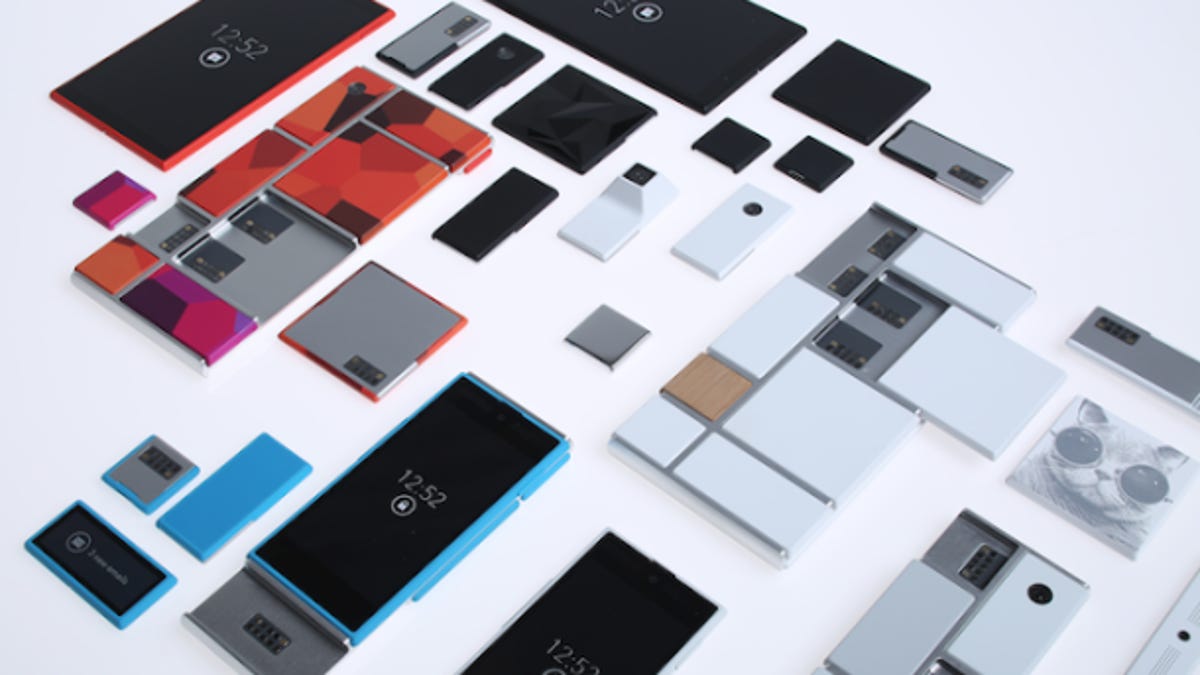Chief of Google's Project Ara talks modular smartphones
In a report, project lead Paul Eremenko talks details about the tech giant's far-out initiative to make a free, open hardware platform for customizable smartphones.

It's been a few months since Motorola announced its modular smartphone idea called Project Ara. Since then, Google has sold the phone maker to Lenovo and it's been unclear what would happen with the project. But now, new details are emerging.
It turns out Google held onto Motorola's Advanced Technology and Projects (ATAP) group where Project Ara was housed. Run by Regina Dugan, the former director of Defense Advanced Research Projects Agency (DARPA), ATAP is now under Google's Android umbrella.
The project, which aims to help smartphone users build customizable handsets, is expected to have a functioning prototype ready within a few weeks and a commercial release by early next year, according to a Time Magazine article that interviewed Paul Eremenko, the head of the project, and other people working on the project. Wednesday's lengthy report also revealed details of what Google has in store for the initiative.
The central idea of Project Ara is to help smartphone users take handset customization beyond ringtones, wallpaper, and body colors to the devices' very form and function. The initiative would be a free, open hardware platform for creating highly modular smartphones.
An endoskeleton, or structural frame, would hold the smartphone modules of the owner's choice, such as a display, keyboard, or extra battery -- and users would be able to swap out malfunctioning modules or upgrade as innovations emerge.
"The question was basically, could we do for hardware what Android and other platforms have done for software?" Eremenko told Time. "Which means lower the barrier to entry to such a degree that you could have tens of thousands or hundreds of thousands of developers as opposed to just five or six big [manufacturers] that could participate in the hardware space."
Google is pushing for the endoskeleton to cost $50. It will come only with Wi-Fi and no cellular connection. Users could then build up the phone how they like with various modules, like a camera, high-speed processor, speakers, and more.
"We want not just to create something that's custom, and not even just something that's unique, but actually something that's expressive so that people can use this as a canvas to tell a story," Eremenko said. "So that you can set your phone down at dinner on the table next to you, and it becomes a topic of conversation for the first fifteen minutes of dinner."
There will be three sizes of endoskeleton: mini, medium, and jumbo. They will have an aluminum frame, networking circuitry, and a back-up battery. Each endoskeleton will have several module connectors -- for example, the medium frame will have room for 10 connectors.
These lockable modules can be swapped out and switched around without having to shut off the phone. They will also be small -- only 4mm thick -- so a complete phone would measure 9.7mm in thickness. For comparison, the iPhone 5S is 7.6mm thick and Samsung's Galaxy S5 is 8.1mm.
"A big challenge on this project was that a cell phone is one of the most integrated things that's made today, and we're trying to separate it into modular pieces," Project Ara's lead mechanical engineer Ara Knaian told Time. "And so the challenge was how to fit everything in an efficient way, so that people could have the ability at home to add and remove modules and have a lot of flexibility about what modules they put in, but not to have too much added weight or too much added cost by doing that."
For the Project Ara initiative, Google has partnered with NK Labs to do the electrical, mechanical, and software engineering and with 3D Systems to make a high-speed 3D printer to mass produce the Ara endoskeletons.
As for other cutting-edge ATAP projects, the group is also working on Project Tango, which aims to give smartphones the ability to do realistic 3D mapping and create virtual experiences as the phone's owner moves through the real world.

